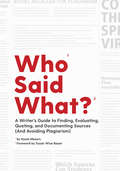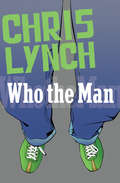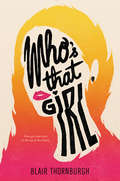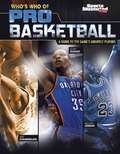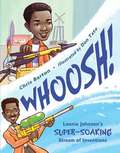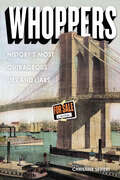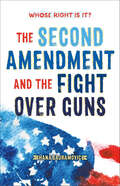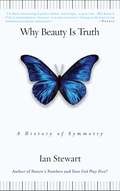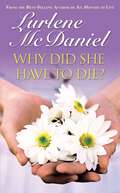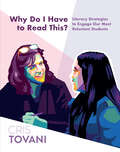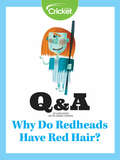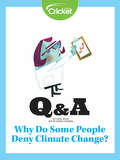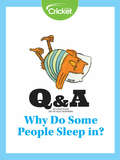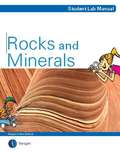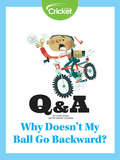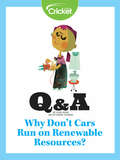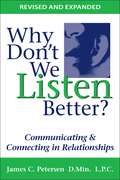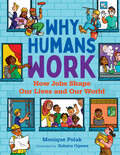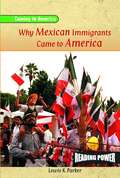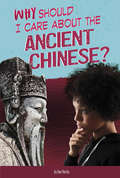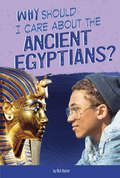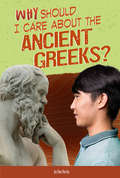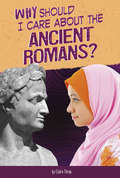- Table View
- List View
Who Said What? (and Avoiding Plagiarism): A Writer's Guide To Finding, Quoting, And Documenting Sources (and Avoiding Plagiarism)
by Kayla MeyersA thorough, accessible guide to research, citation, and source evaluation, designed to assist students growing up in an era of social media, fake news, alternative facts, and information overload. Is Yahoo Answers a good source for your History essay? How about InfoWars? How do you include another person’s ideas in your work without stealing them? Should you cite an Instagram post as a source, and if so, how do you do it? Who Said What? provides students from middle school through college (along with bloggers, writers, and others who need to write with accuracy and clarity) with a reliable, friendly guide through the often bewildering process of research, writing, and documentation. Drawing on years of teaching, research, and writing experience, Kayla Meyers teaches you how to evaluate the trustworthiness of a source, how to use it without stealing it, how to properly credit its creator, and why all of this even matters. With contemporary examples and the step-by-step explanations that made Susan Wise Bauer’s Writing With Skill series so popular, Who Said What? will become an essential resource for young writers.
Who the Man
by Chris LynchEarl doesn&’t want to be a bully. It&’s not his fault that his body is as big as a football player&’s!Thirteen-year-old middle-schooler Earl has the body and facial scruff of a man—and this gets him into trouble. Everyone thinks Earl&’s a tough guy, but he&’s just trying to get by. Thinking he knows what&’s right from wrong—and using his fists to prove his point—earns him a week&’s suspension from school. Earl thinks he&’ll have a relaxing week, but things soon slip out of his control when his home life starts to fall apart. He may be as big as a grown-up, but Earl will learn that being a man means more than how you look on the outside.
Who's That Girl
by Blair ThornburghThis laugh-out-loud debut is filled with hilarious awkward encounters, a supportive LGBTQ organization, and too many cheesy lyrics to count—all with the compulsive readability of Audrey, Wait! and Boy Meets Boy. Junior Nattie McCullough has always been that under-the-radar straight girl who hangs out in the cafeteria with her gay-straight alliance friends. She’s never been the girl that gets the guy, let alone the girl that gets a hit song named after her.But when last summer’s crush, smoking-hot musician Sebastian Delacroix—who has recently hit the mainstream big-time—returns home to play a local show, that’s just what she gets. He and his band, the Young Lungs, have written a chart-topping single—“Natalie”—which instantly makes Nattie second guess everything she thought about their awkward non-kiss at that June pool party. That it was horrific. That it meant nothing. That Sebastian never gave her another thought. To help keep her mind off of Sebastian and his maybe-about-her, maybe-not-about-her song, Nattie throws herself into planning the school’s LGBTQIA dance. That proves problematic, too, when Nattie begins to develop feelings for her good friend Zach. With the song getting major airplay and her once-normal life starting to resemble the cover of a gossip magazine, Nattie is determined to figure out once and for all if her brief moment with Sebastian was the stuff love songs are made of—or just a one-hit wonder.
Who's The Junior High Hunk? (Junior High #9)
by Kate KenyonIT'S TOO WEIRD FOR WORDS. Beautiful French exchange student Monique Gorgee has the eighth grade in an uproar. Everyone is crazy about her. But Jen is jealous because she thinks Monique is replacing her as Nora's best friend. Most of the girls copy everything Monique wears. They even believe bell-bottoms are back! And most of the boys just like to hang around her. Monique's style is definitely cool, but her taste in boys is not so hot. She's fallen for, "How do you say? A hunk!" Only he's the last person on earth a girl could like. What is going on at Cedar Groves Junior High?
Who's Who of Pro Basketball: A Guide to the Games Greatest Players (Who's Who of Pro Sports)
by Tyler OmothIntroduces readers to the most dynamic pro basketball stars of today and yesterday, including notable statistics and records.
Who's Who: Theme Anthology 7 (Heath Middle Level Literature)
by Houghton MifflinHow do you know who you are? Helping others, being yourself, and belonging create your identity. Can you find yourself in these selections?
Whoosh!: Lonnie Johnson's Super-soaking Stream Of Inventions
by Chris Barton Don TateA cool idea with a big splash. You know the Super Soaker. It's one of top twenty toys of all time. And it was invented entirely by accident. Trying to create a new cooling system for refrigerators and air conditioners, impressive inventor Lonnie Johnson instead created the mechanics for the iconic toy. A love for rockets, robots, inventions, and a mind for creativity began early in Lonnie Johnson's life. Growing up in a house full of brothers and sisters, persistence and a passion for problem solving became the cornerstone for a career as an engineer and his work with NASA. But it is his invention of the Super Soaker water gun that has made his most memorable splash with kids and adults.
Whoppers: History's Most Outrageous Lies and Liars
by Christine SeifertHistory of full of liars. Not just little-white-telling liars, but big-honkin', whopper-telling liars—people who can convince us that even the most improbable, outrageous, nonsensical stories are true. And the worst part is that we'll believe it. Whoppers tells the story of history's greatest liars and the lies they told, providing a mix of narrative profiles of super-famous liars, lies, and/or hoaxes, as well as more obscure episodes. Famous liars include people you might have learned about in school, like P. T. Barnum, who basically made a living lying to people for money; liars you might never have heard of before, like Victor Lustig, who managed to "sell" the Eiffel Tower twice in the 1920s; and hoaxes like the Loch Ness Monster Photo Hoax. The book will also include illustrations, sidebars, and infographics.
Whose Right Is It? The Second Amendment and the Fight Over Guns
by Hana BajramovicDiscover the truth about the Second Amendment, the NRA, and the United States’ centuries-long fight over guns in this first-of-its-kind book for middle grade readers."A compelling, clear analysis of one of our country’s oldest dilemmas: how to balance gun rights with public safety. It tells the full and true story of the Second Amendment, and points to a way to bring sanity to our gun laws. A remarkable primer for all ages." —Michael Waldman, author of The Second Amendment: A Biography For the majority of the United States’ history, the right to own a gun belonged to a “well regulated militia.” That changed in 2008 with the historic District of Columbia v. Heller case, which ruled that the Second Amendment protected an individual’s right. In the years since, the debate over gun legislation has reached a crescendo. And the issue grows ever relevant to children across America, with an estimated three million exposed to shootings every year. From metal detectors to see-through backpacks to shooting drills, kids face daily reminders of the threat of guns. Hana Bajramovic's Whose Right Is It? The Second Amendment and the Fight Over Guns reveals how a once obscure amendment became the focus of daily heated debate. Filled with historical photos and informative graphics, the book will show young readers how gun legislation has always been a part of American history and how money, power, and systemic racism have long dictated our ability to own guns.A Junior Library Guild Selection"Hana Bajramovic provides readers with a compelling overview on the history of guns in the United States and the changing, conflicting interpretations of the Second Amendment certain to stimulate conversation and thinking on the part of future generations." —Award-winning author Doreen Rappaport
Why Beauty is Truth: The History of Symmetry
by Ian StewartAt the heart of relativity theory, quantum mechanics, string theory, and much of modern cosmology lies one concept: symmetry. <P><P> In Why Beauty Is Truth, world-famous mathematician Ian Stewart narrates the history of the emergence of this remarkable area of study. Stewart introduces us to such characters as the Renaissance Italian genius, rogue, scholar, and gambler Girolamo Cardano, who stole the modern method of solving cubic equations and published it in the first important book on algebra, and the young revolutionary Evariste Galois, who refashioned the whole of mathematics and founded the field of group theory only to die in a pointless duel over a woman before his work was published. Stewart also explores the strange numerology of real mathematics, in which particular numbers have unique and unpredictable properties related to symmetry. He shows how Wilhelm Killing discovered "Lie groups" with 14, 52, 78, 133, and 248 dimensions-groups whose very existence is a profound puzzle. Finally, Stewart describes the world beyond superstrings: the "octonionic" symmetries that may explain the very existence of the universe.
Why Did She Have to Die? (Lurlene McDaniel Books)
by Lurlene N. McDanielFor thirteen years, Elly has been in Kathy's shadow, always second best. Even so, the two of them understand each other as only sisters can. Jealousy, anger, and resentment give way to guilt when Kathy dies suddenly and Elly is left to ask, "Why did she have to die?"
Why Do I Have to Read This?: Literacy Strategies to Engage Our Most Reluctant Students
by Cris TovaniWhy do I have to read this?- What teacher doesn't dread this question? It usually comes from our most disengaged students a student who cries of boredom, or one who is angry or apathetic. When we don't know what else to try, it's easy to become frustrated and give up on these challenging learners. Author Cris Tovani has spent her career figuring out how to entice challenging students back into the process of learning. Why Do I Have to Read This?: Literacy Strategies to Engage our Most Reluctant Students Tovani shares her best secrets, lessons learned from big fails, and her most effective literacy and planning strategies that hook these hard to get learners. You will meet many of Tovani's students inside this book. As she describes some of her favorites, you may even recognize a few of your own. You will laugh at her stories and take comfort in her easily adaptable strategies that help students remove their masks of disengagement. She shows teachers how to plan by anticipating students' needs. HerC urriculumY ouA nticipate structures of Topic, Task, Targets, Text, Tend to me, and Time willhelp you anticipate your curriculum. InsideWhy Do I Have to Read This? readers will find: Literacy strategies for all content areas that support and engage a wide range of learners so they can read and write a variety of complex textReference charts packed with small bites of instructional shifts that coaches and teachers can use to quickly adjust instruction to re-engage studentsPlanning strategies that show teachers how to connect day-to-day instruction so that no day lives in isolationVersatile think sheets that are reproducible and adaptable to different grade levels, content areas, and disciplinesAbove all, Tovani gives teachers energy to get back into the classroom and face students who wear masks of disengagement. She reminds us of the importance of connecting students to compelling topics, rich text, useful targets, and worthy tasks. Teachers must tendto students' basic needs and helps us consider how to best structure instructional time.After reading this book, teachers will have new ways to connect with students in a deep, authentic way. Written in a humorous, compassionate, and wise voice,Why Do I Have to Read This? will provide answers to the pressing questions we have when we try to teach and reach all of our students.
Why Do Redheads Have Red Hair?
by Lizzie WadeIn this engrossing Q & A, you'll learn why some people have red hair. It's related to what type of genes you have.
Why Do Some People Deny Climate Change?
by Lizzie WadeDespite a mountain of evidence, some people still don't believe that climate change is occurring. Why is that? Find out in this insightful Q & A.
Why Do Some People Sleep in?
by Lizzie WadeWhy do some people sleep in longer than others? This Q & A explains the disparity of different people's need for sleep.
Why Do Some Things Stop While Others Keep Going? (Investigating and Questioning Our World through Science and Technology)
by Joseph S. Krajcik Brian J. Reiser David Fortus LeeAnn M. SutherlandNIMAC-sourced textbook
Why Doesn't My Ball Go Backward?
by Lizzie WadeIf you throw a ball up while riding your bike, it does not go backward! Why is that?
Why Don't Cars Run on Renewable Resources?
by Lizzie WadeA bioengineer at Tel Aviv University in Israel explains how to extract renewable energy from a potato.
Why Don't We Listen Better?: Communicating and Connecting in Relationships
by James PetersenGood communication uses the same skills in a professional office, on a date, in a corporate board room, or at a kitchen table, says Dr. Jim Petersen, author of Why Don't We Listen Better? He wrote this book to help you gain these skills and improve your relationships. According to this veteran counselor, most of us think we listen well, but don't. Not really hearing what others are trying to say can be costly. When people don't feel heard they tend to get irritated, confused, and pull away from each other. You will chuckle in recognition of his flat-brain theory. It shows why we have trouble hearing each other and what we can do about it. Jim's insights and collection of listening techniques will give you creative ways to handle both daily interactions and difficult relationshipsUsing the portable Talker-Listener Card will help you and others hear each other, relax, think clearer, and build empathy and cooperation. This unique approach to listening could change your life.
Why Humans Work: How Jobs Shape Our Lives and Our World (Orca Think #6)
by Monique PolakWhat do you want to be when you grow up? I bet you've been asked that question before. But have you ever thought about why humans work? There are almost 3.5 billion people working in the world today, and that number is growing. In Why Do We Work? author Monique Polak investigates the past, present and future of jobs, including how work has also been shaped by discrimination, privilege and child labor. Meet a variety of working professionals and explore why we have careers, vocations and professions. How is the way we work changing, and what will it look like in the future?
Why Mexican Immigrants Came to America (Coming to America Ser.)
by Lewis K. ParkerExplores the history of Mexican immigration to what is now the United States, and looks at the contributions of Mexican Americans to the culture of their new country.
Why Should I Care About the Ancient Chinese? (Why Should I Care About History?)
by Claire ThropFrom pasta to paper, the inventions of the Ancient Chinese remain part of everyday life in our modern world. Learn how items like wheelbarrows, the first toothbrushes, and early earthquake detectors have evolved into devices we know today and discover just how big of an impact the Ancient Chinese have had on your life.
Why Should I Care About the Ancient Egyptians? (Why Should I Care About History?)
by Nick HunterThe Ancient Egyptians are famous for their pyramids and mummies, but how do these ancient items impact your life today? From hieroglyphs evolving into emojis and kohl around the eyes evolving into eye liner and mascara, the inventions and discoveries of Ancient Egypt offer us endless reasons to appreciate history.
Why Should I Care About the Ancient Greeks? (Why Should I Care About History?)
by Don NardoEvery four years, the world celebrates one of the most exciting contributions of the Ancient Greeks: the Olympic Games. That, of course, is not all this great civilization left behind. From theater to democracy, discover how the Greeks' ancient inventions and philosophies evolved into objects and ideas we know and treasure today.
Why Should I Care About the Ancient Romans? (Why Should I Care About History?)
by Don NardoWe celebrate the Ancient Romans for contributions they made to modern engineering and architecture, but their impact is felt in even the smallest details of everyday life. Discover how inventions like socks, fast food restaurants, and movie theaters got their start in Ancient Rome and evolved into things we enjoy today.
